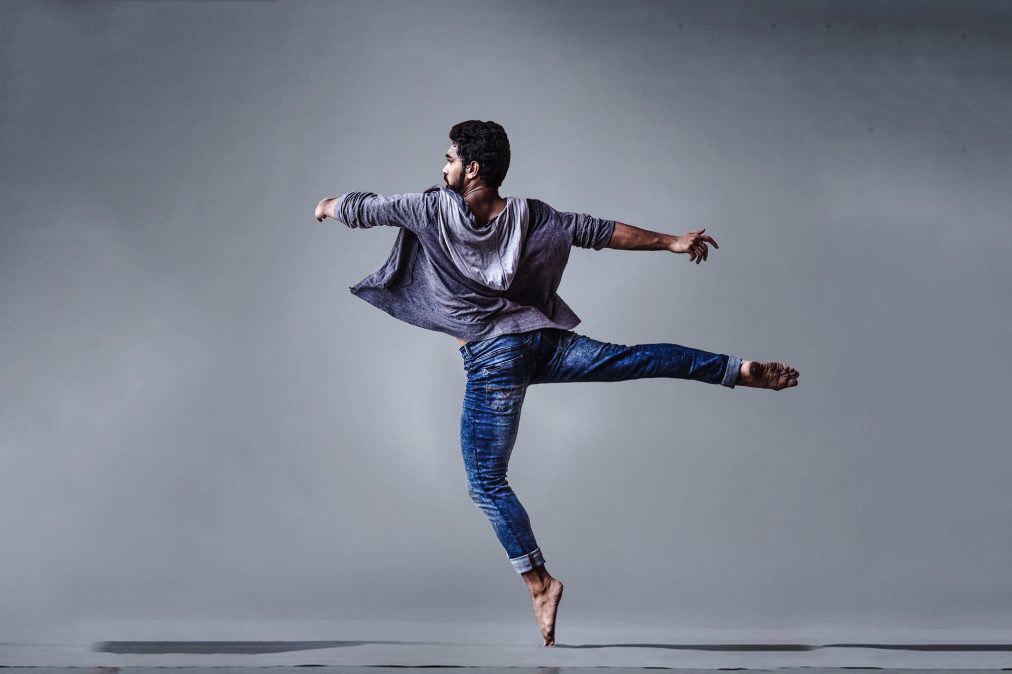Injury Prevention for Dancers

“The show must go on,” is a common mentality adopted by recreational and professional dancers alike, and fear of injuries – or more accurately, the time they may force a dancer out of the studio – is frequently expressed. Good technique and preventative training is a key factor to keeping up with your graceful moves!
Dancers possess a unique combination of strength and flexibility. Although every body is different, certain key muscle groups should be targeted by all dancers to ensure their movements remain balanced, supported, and strong. The list below is by no means exhaustive, but every dancer could benefit from incorporating these three exercises into their regular maintenance program.
Banded Squat Walks
Why is it important?
This exercise helps to activate and strengthen the “turnout muscles”. When used effectively, these muscles will help to strengthen the pelvis, which can reduce the risk of injuries in the back, hips, and knees. It will also make single-leg balancing much easier – hello extra pirouettes!
Instructions:
- Stand with your feet approximately shoulder-width apart, with a resistance band looped around your ankles.
- Bend your knees into a squat position.
- Ensuring that you do not let your body or hips tip side-to-side, slowly take 10 sideways steps to the right. Repeat to the left. Perform 3 sets.
Deep Core Single Leg Extensions
Why is it important?
Transversus abdominis (“TA” for short) is the deepest layer of abdominal muscles, and acts essentially like a corset to stabilize the torso. When used properly, it enables us to move our arms and legs in a more controlled and efficient manner. Given the rapid movements and large ranges of motion dancers often demand of their bodies, having a strong TA is also crucial for a happy and healthy back.
Instructions:
- Lay on your back with your knees bent and your feet on the floor.
- To engage the TA muscle, think of bringing the fronts of your hip bones in towards your belly button.
- Keeping the TA muscle engaged, slowly lift one foot to hover 1” above the floor.
- Without letting your hips rock up and down, slowly straighten the leg as far as you can, keeping the foot hovering 1” above the floor.
- Return slowly to the starting position, and repeat on the other side. Perform 10 reps, 3 sets.
Piano Key Toes
Why is it important?
This exercise will work the intrinsic muscles of the foot, which are very important for stabilizing the foot. This will help create a strong arch, and more control of your foot and ankle when landing jumps or training pointe work.
Instructions:
- Stand with your foot firmly on the floor.
- Try to lift up and spread all of your toes, while keeping both your heel and the ball of your foot still.
- Without letting the toes curl up, slowly try to place one toe back down to the floor at a time, starting with the little toe – as if you were playing a piano!
In addition to the above, it is always important to complete a thorough warm-up/cool-down, fuel your body with a balanced diet, get enough rest, and know how to recognize the early signs of an injury developing before it becomes a major problem. Our team at PhysioWorks can help with both injury rehabilitation and preventative care, so pirouette your way over to the clinic if you have specific questions or concerns!
Sydney Schnell, MPT

This week our featured therapist is Sydney Schnell. To learn more about Sydney check out our PhysioWorks team.


Leave a Reply